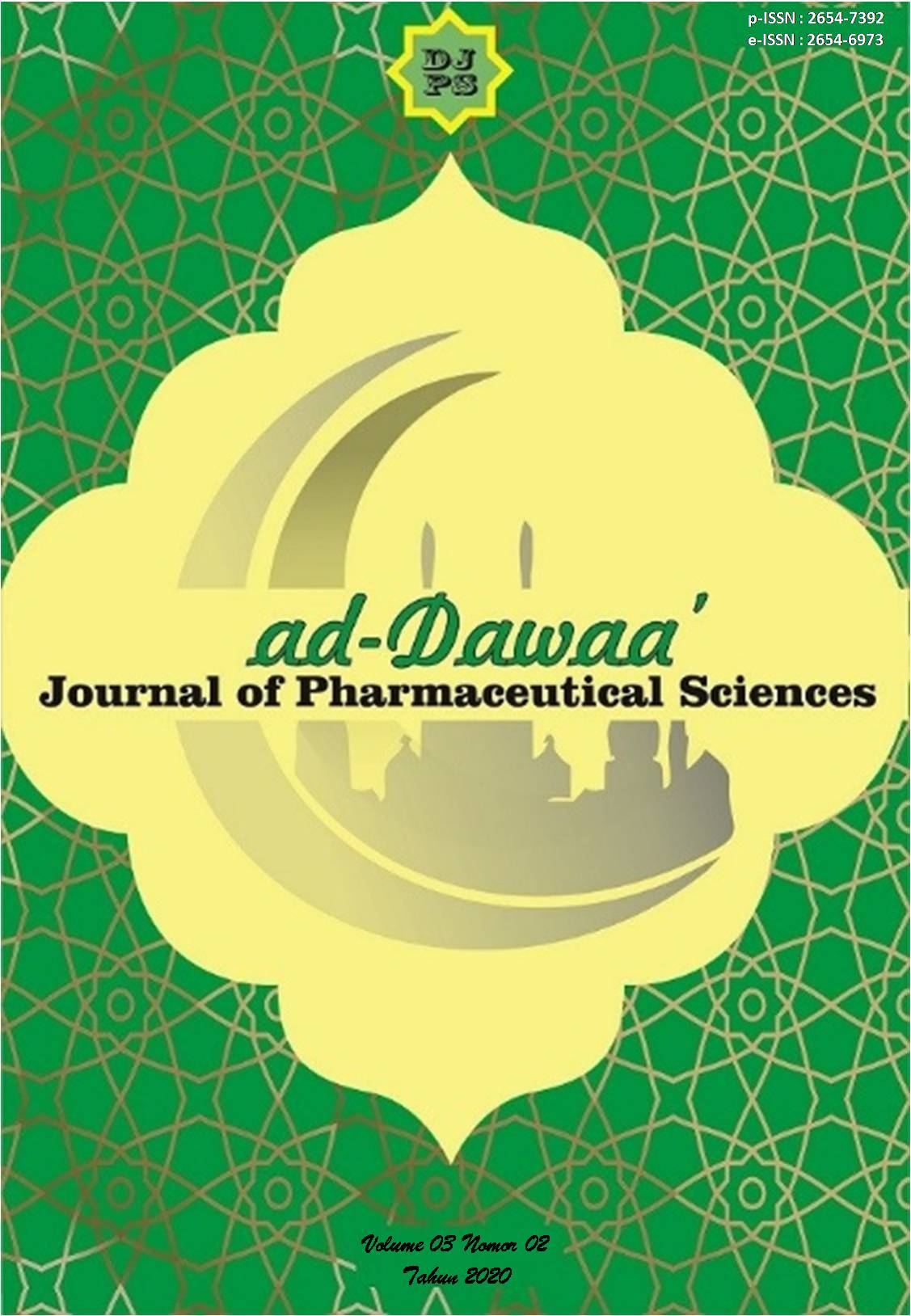Bioavailability Study of Propranolol Patch
Abstract
Bioavailability is a measure of the rate and amount of drug or active ingredient that is absorbed by a drug product and available at the site of action. By definition, the bioavailability of a drug when administered intravenously is 100%. However, when a drug is given by a different route of administration, its overall bioavailability will decrease (since the drug is not completely absorbed and metabolized first pass effect) or may vary from patient to patient. Bioavailability is very important in pharmacokinetics. One of them is that bioavailability needs to be taken when calculating the doses for administering a drug other than by intravenous route. The aim of this study was to describe the bioavailability of propranolol in patch preparations. Propranolol is made in patch formulations using menthol, PEG, and various combinations of PVP and Eudragit. PVP and Eudragit each dissolved in alcohol and then mixed until homogeneous. Propranolol was dissolved with a menthol solution and then mixed into a solution of PVP and Eudragit. Finally, PEG is added to the solution and stirred until homogeneous and then poured into the patch mold. The patches produced were then measured for each patch and bioavailability assay. The patch formula produced can be used transdermally, but of the three formulas, the F3 formula with a ratio of PVP K30 and Eudragit RS-100 3: 7 gives the best results with a tmax of 2 hours, Cmax 79.33 µg / ml and AUC 49.07 µg hours / ml.
Downloads
References
DAFTAR PUSTAKA
Aiche, J. M. (1993). Faramasetika 2 Biofarmasi. Edisi kedua. Surabaya: Airlangga University Press.
Arsul, M. I., & Rahman, L. (2017). Pengaruh Variasi Kombinasi PVP K30 dan Eudragit RS-100 Terhadap Sifat Fisik dan Uji In vitro Propranolol Patch. Jurnal Farmasi FIK UINAM, 5(3), 161-165.
Babu, G. D., Sagar, K. C., Bhoot, M. R., Swaropp, A. P., & Rao, N. V. (2012). Design and Evaluation of Valsartan Transdermal Patch. International Journal of Research in Ayurveda and Pharmacy, 3(3), 461-464.
Fridayanti, A., Hendradi, E., & Isnaeni. (2011). The Release of Sodium Diclofenac From Matriks Type of Transdermal Patch. J. Trop. Phar. Chem, 1(2), 76-82.
Guy, R., & Hadgraff, J. (1989). Selection of Drug Candidates for Transdermal Drug Delivery, in : Transdermal Drug Delivery. Guy, R., and J. Hadgraff (Eds). . New York: Marcel Dekker.
Kandavilli, S., Nair, V., & Panchagnula, R. (2002). Polymers in Transdermal Drug Delivery Systems. Pharmaceutical Technology, 62-81.
Lund, W. (1994). The Pharmaceutical Codex, Principles and Practice of Pharmaceutics. 12th eds. . London: The Pharmaceutical press.
Sahora, K., Yadav, B., & Sharma, B. (2011). Transdermal Patch: A Discrete Dosage Form. International Journal of Current Pharmaceutical Research, 3(3), 98-108.
Sholehah, M. (2011). Optimasi HPMC sebagai Matriks dan Menthol sebagai Enhancer terhadap Penetrasi Propranolol HCL dalam Sediaan Patch Transdermal. Surabaya: Universitas Katholik Widya Mandala.
Sukamto, Y. (2010). Pengaruh HPMC dan PEG 400 Terhadap Transpor Transdermal Propranolol HCl dalam Sediaan Matriks Patch dengan Metode Desain Faktorial. Surabaya: Universitas Katholik Widya Mandala.
Vijaya, V., Sumanth, M. H., Suman, L., Vinay, T., Srinivasrao, D., & Kumar, J. K. (2010). Development and Physiochemical, in-Vitro Evaluation of Antihypertensive Transdermal. J. Pharm. Sci & Res, 2(3), 171-177.
Waju, R. S. (2010). Pengaruh Eudragit RL-100 dan Propilen Glikol Terhadap Transport Transdermal Propranolol HCl dalam Matrikx Sediaan Patch dengan Metode Desain Faktorial. Surabaya: Fakultas Farmasi Universitas Katholik Widya Mandala .
Williams, A. C., & Barry, B. W. (1992). Skin Absorption Enhancers. Critical Reviews. Therapeutic Drug Carrier Systems, 9(3-4), 305-53.
Once an article was published in the journal, the author(s) are:
- granted to the journal right licensed under Creative Commons License Attribution that allows others to share the work with an acknowledgement of the work's authorship.
- permitted to publish their work online in third parties as it can lead to wider dissemination of the work.
- continue to be the copyright owner and allow the journal to publish the article with the CC BY-SA license
- receiving a DOI (Digital Object Identifier) of the work.


1.png)